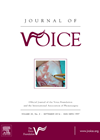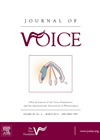
Journal Reviews
Association of diabetes mellitus type 2 with age-related changes in the larynx
Diabetes affects the body with changes in the neurological, muscular and vascular systems. It is therefore conceivable that the larynx, which is a musculoskeletal organ, can be adversely affected by type 2 diabetes mellitus. To explore this possibility, 174 Caucasian...
Factors influencing transformation of laryngeal dysplasia to malignancy in a 10-year review
Laryngeal dysplasia has a propensity to change into malignancy, the generally reported rate of this being about 14%. In this retrospective study of 125 patients, the authors have assessed the severity of dysplasia in relation to the incidence and time...
Vocal fold motion impairment following intubation – how likely is it to recover?
Ed’s Choice reviews a timely paper investigating prolonged intubation on vocal fold motion. The current scientific literature is dominated by studies examining COVID-19 and its widespread effects on health and healthcare delivery but will be old news by the time...
Laryngeal cleft in a 66-year-old man!
This is a fascinating case report of a 66-year-old man who presented with a carcinoma of the piriform sinus. During chemoradiotherapy, he developed dyspnoea, dysphagia and aspiration pneumonia. His chemoradiotherapy was stopped and he underwent a pharygnolaryngectomy. When the surgical...
Management of stage IV pharyngolaryngeal lesions
This is a retrospective study of 63 patients presenting with stage four laryngeal and/or hypopharyngeal squamous cell carcinoma. The aim was to define the factors influencing the oncological and functional outcomes of the patients. All patients had T4 lesions with...
Laryngeal oedema as a side-effect of tyrosine kinase inhibitor therapy
Tyrosine kinase inhibitors (TKIs) such as Imatinib are increasingly being used to treat haematological and solid malignancies. These agents have revolutionised the treatment of chronic myeloid leukaemia in particular. Although better tolerated than most conventional chemotherapy drugs, multiple side-effects have...
Spasmodic dysphonia – is greater awareness needed?
Spasmodic dysphonia (SD) is a focal dystonia of the laryngeal musculature. Previously considered to be a rare disorder, it has more recently been suggested that SD is in fact not rare but is frequently misdiagnosed or undiagnosed. This paper would...
The laryngeal microdebrider – a useful adjunct in the surgical treatment of Reinke’s oedema?
The surgical treatment of Reinke’s oedema traditionally involves a cold steel incision placed in the lateral aspect of the vocal fold with aspiration of the characteristic gelatinous contents. In this paper, the authors compare voice outcomes in patients treated with...












